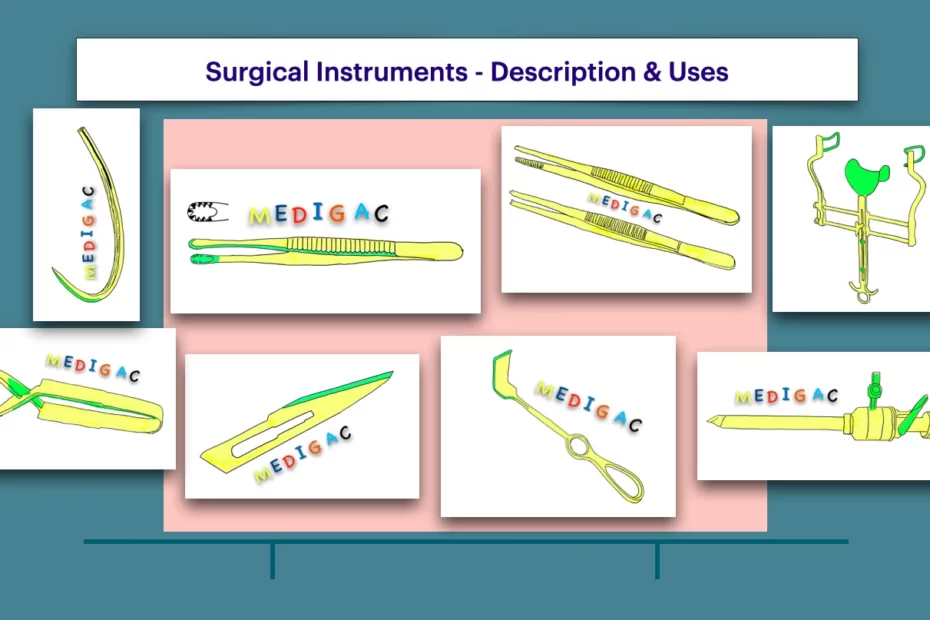We have made all the SURGERY Instruments full set or list with the Names, Description, Uses with Pictures. in you medical ward you will see all this instruments/equipments/devices. So full knowledge regarding all this devices is necessary for your medical and surgical practice and also during exams.
TONGUE DEPRESSOR
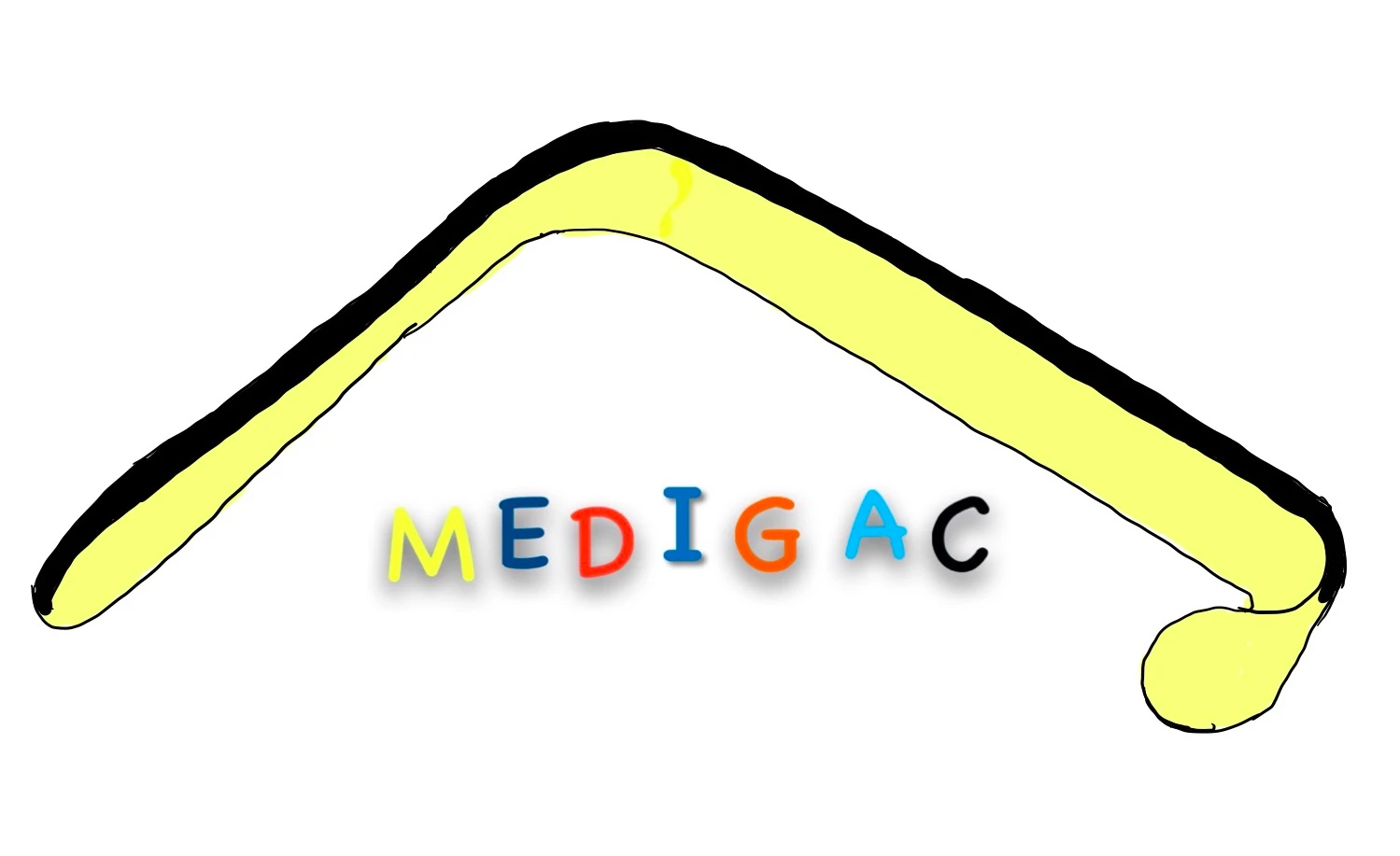
Description :
Made up of stainless steel and has a single curve at the middle.
There are two ends, the curved end fits the chin, and the upper end remains over the tongue.
Uses :
1. Oral examination :
- To retract lips and cheek for better viewing the oral cavity.
- To test gag reflex.
IV CANNULA
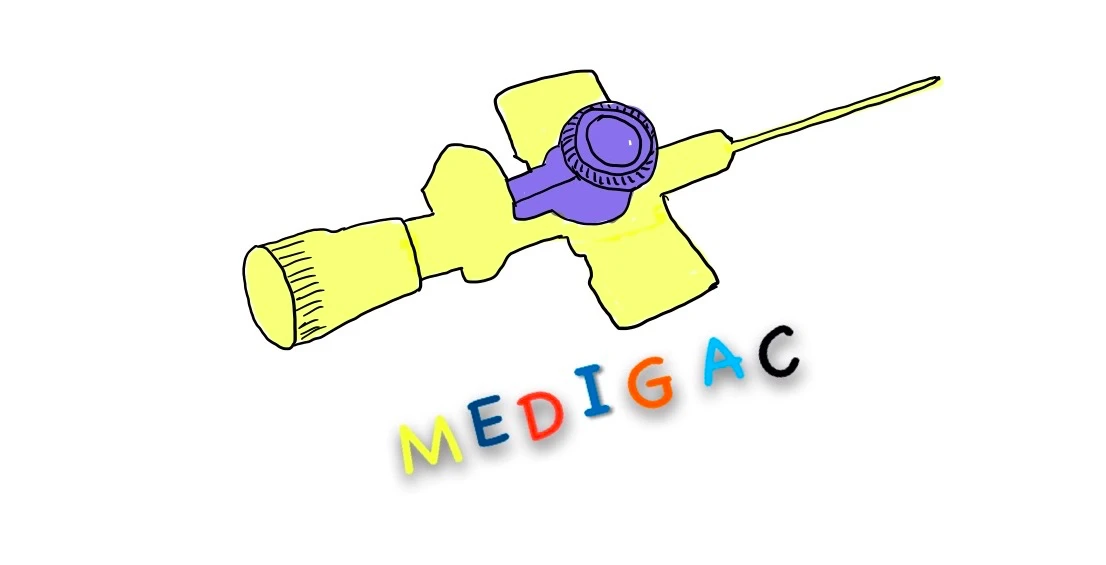
Description :
The body is made up of plastic and the body hold a metal needle.
—There are total 10 parts :
- Luer Lock plug
- Flashback chamber
- Needle Grip
- Luer Connector
- Injection port cap
- Wings
- Valve
- Bushing
- Catheter
- Needle
Uses :
1. To Create a long term path for accessing the venous blog channel.
2. Used in repetitive invasive procedures like :
- Administration of fluids
- Blood Products
- Normal Saline and Medications
- Parenteral Nutrition
- And also can be used in chemotherapy
ELECTRIC CAUTERY

Description :
Electronic device which has a plastic body.
Uses :
1. Cutting tissues : Used to cut unwanted and harmful tissues and removal of them also.
2. Blood Vessels : Used to Burn and Seal the blood vessels during any surgery.
SURGICAL MESH

Description :
Net like structures created by inorganic and biological materials.
Uses :
1. Providing Support : to provide support for prolapsing organs either temporarily or permanently.
Mainly used in Hernia Surgery.
FINOCHIETTO SELF RETAINING CHEST WALL RETRACTOR
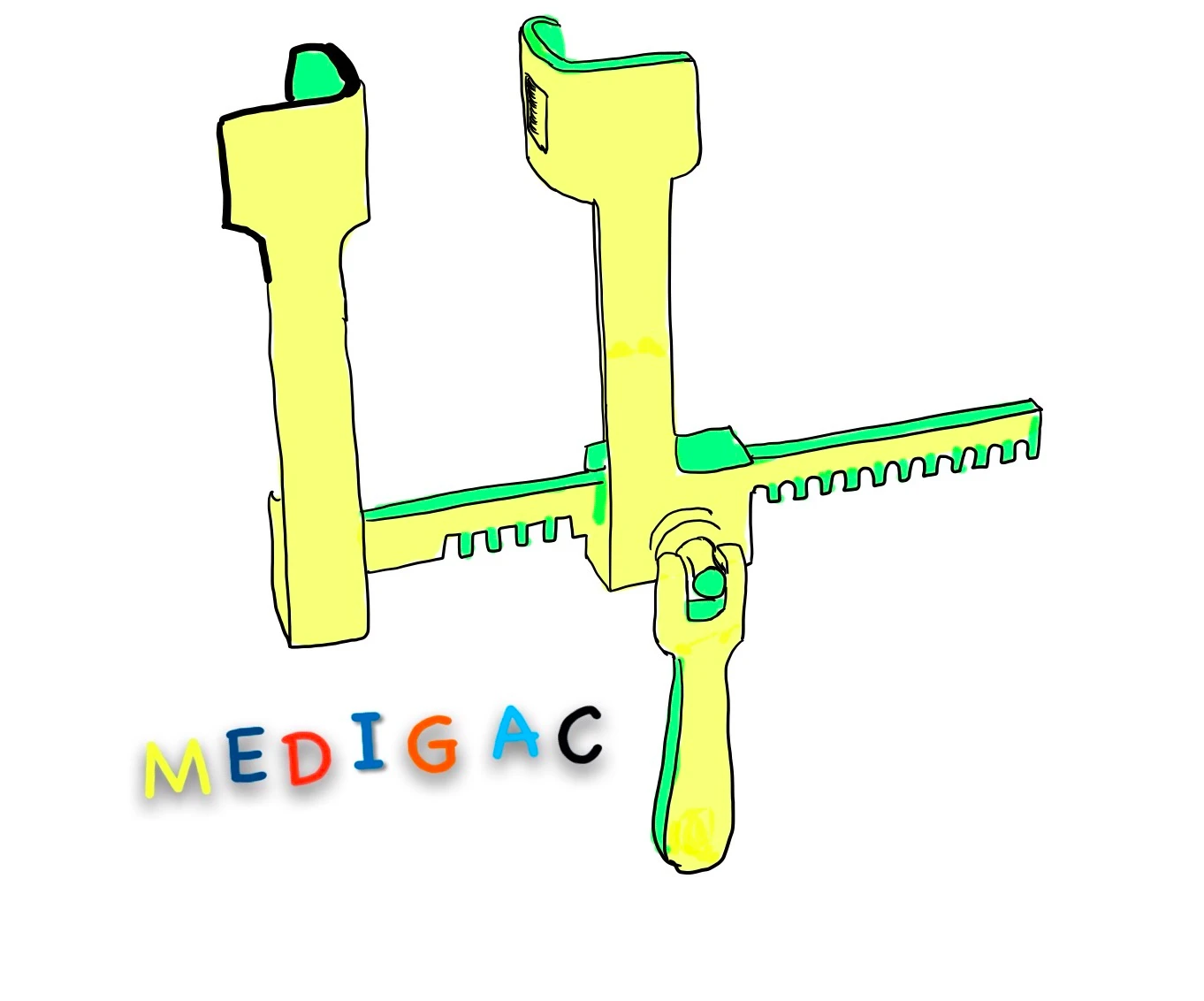
Description :
Metallic body and has two blades, one blade slides through another blade via sharp and long saw like part.
Uses :
It is used to separate the Ribs during Thoracic surgery.
HARRINGTON RETRACTOR

Description :
Made up of stainless steel and has curved Jaws and a Handle.
Uses :
Mainly used to hold back tissue and deep organs in the abdomens.
Uses:
- Cholecystectomy
- Hysterectomy
SELF RETAINING ABDOMINAL RETRACTOR
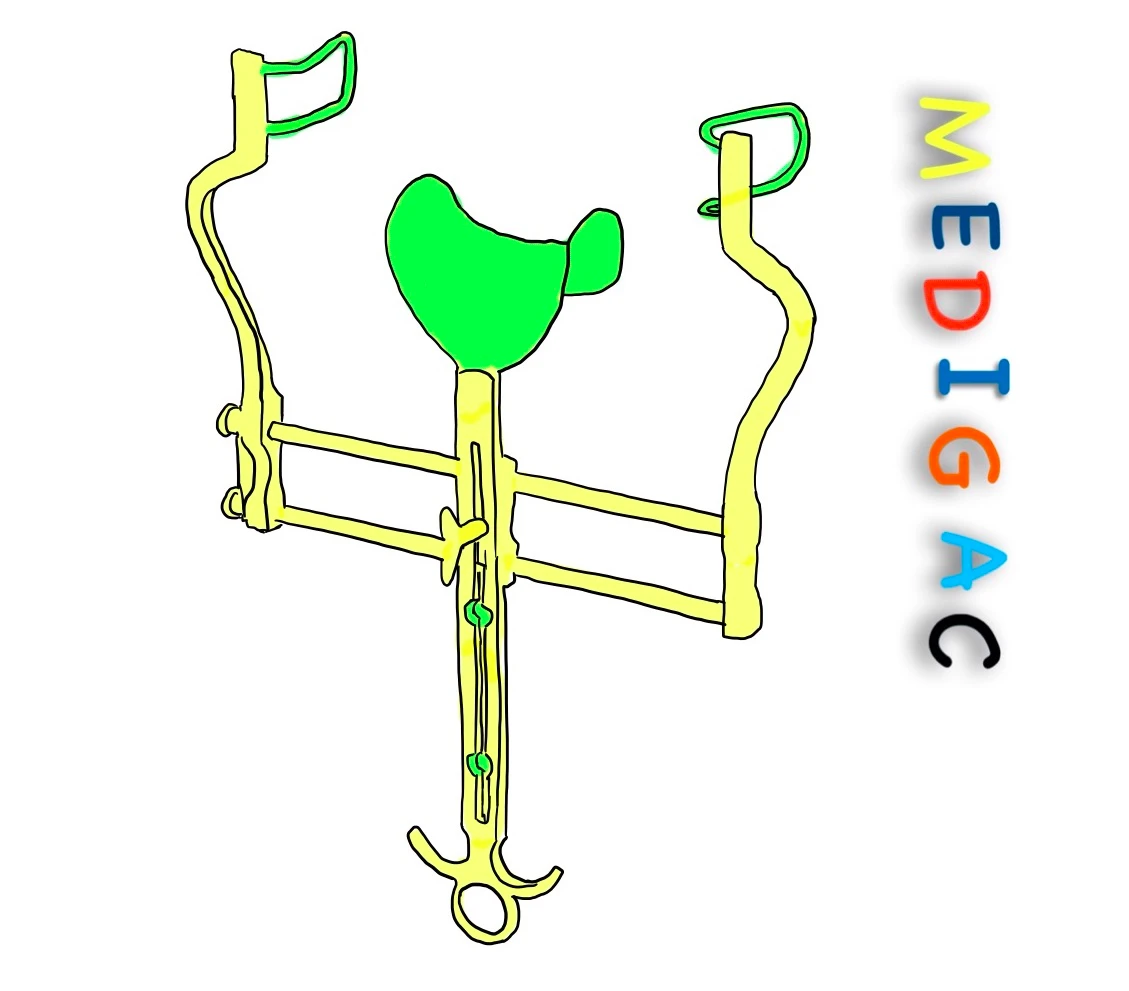
Description :
One of the retractor’s two blades glides up and down on a horizontal bar. A screw can be used to secure the sliding retractor to the horizontal bar. The third blade is held in place by a screw that runs between the blades.
Uses :
Used as Abdominal retractor in :
1. Minilaparotomy : The Surgeon put incision less than 5cm in length and the retractor further helps to keep open the incision and make a wide view.
2. Gastric surgeries like gastrectomy, vagotomy.
3. Removal of adrenal gland.
4. Liver surgeries
DOYEN’S CROSS TOWEL CLIP
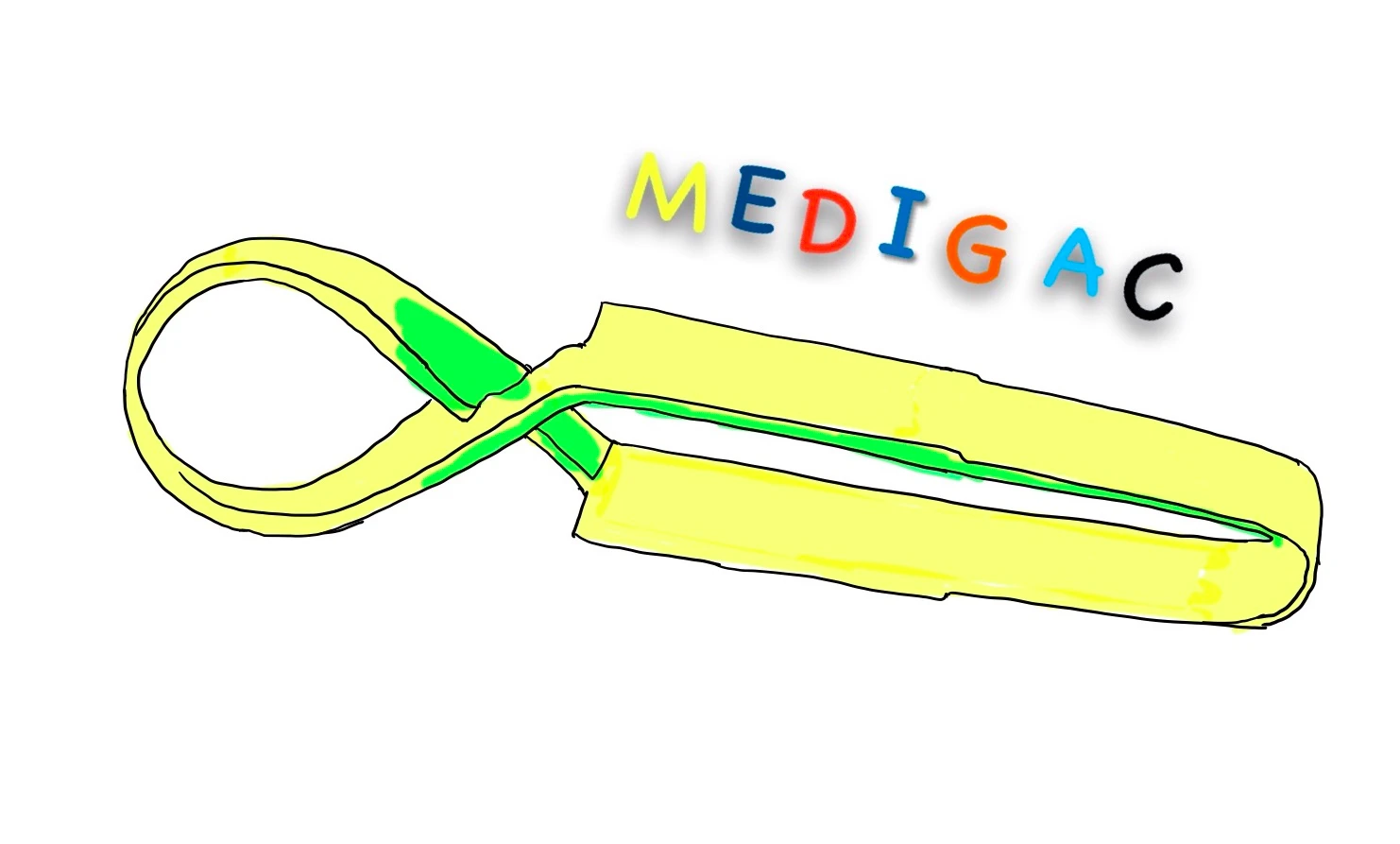
Description :
Made up of stainless steel and has two arms.The two arms ends forms a circular ring by crossing each other.
Uses :
1. Fixing Draping Towels
2. Fixing Diathermy cables, Suction tubes etc.
3. Holding Ribs while elevating flail segment of the chest.
JOLL’S SELF RETAINING THYROID RETRACTOR
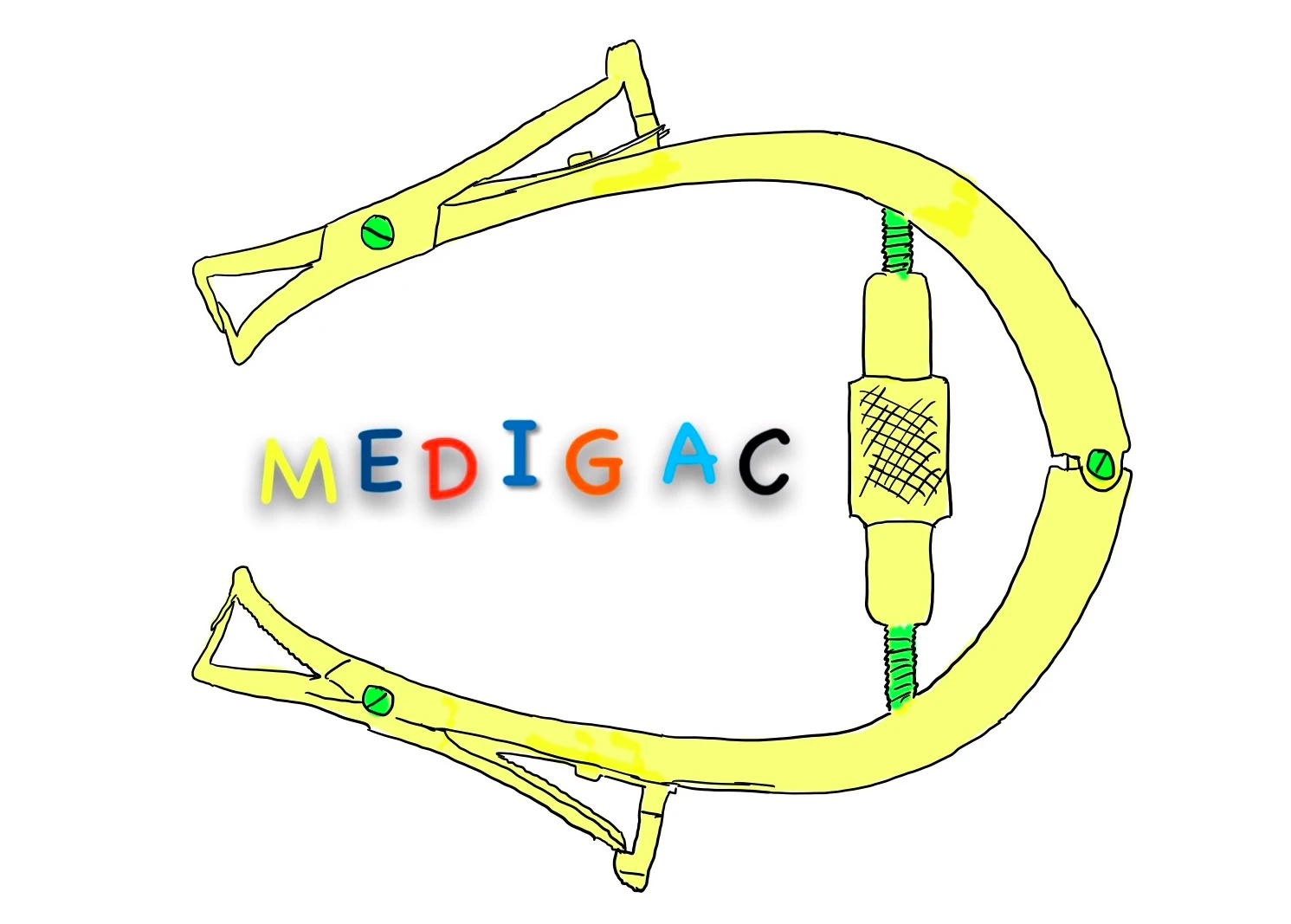
Description :
Made up of stainless steel and has two arms connected with each other by screw joint.
Uses :
1. To retract the soft tissues and enhance the visualization of the surgical field in thyroid and vaginal surgeries.
VERESS NEEDLE

Description :
Metallic needle.
Uses :
1. Pneumoperitoneum : To create pneumoperitoneum during laparoscopic surgery.
MAYO’S TOWEL CLIP
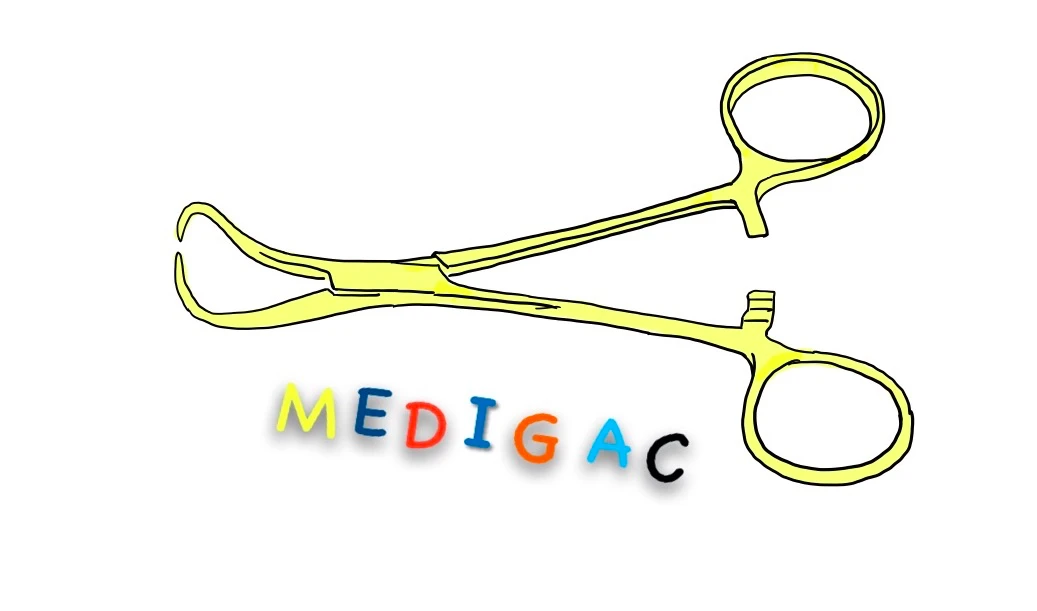
Description :
Forceps like structures. Made up of stainless steel and has 6 parts :
- Finger Ring
- Ratchet
- Shank
- Box Joint
- Curved jaws
Uses :
- To fix the draping sheets.
- To fix instruments like Diathermy cables, laparoscopic camera cable, suction tubes to the draping sheets.
- Sometimes it may be used as tongue holding forceps.
BULL DOG ARTERIAL CLAMP
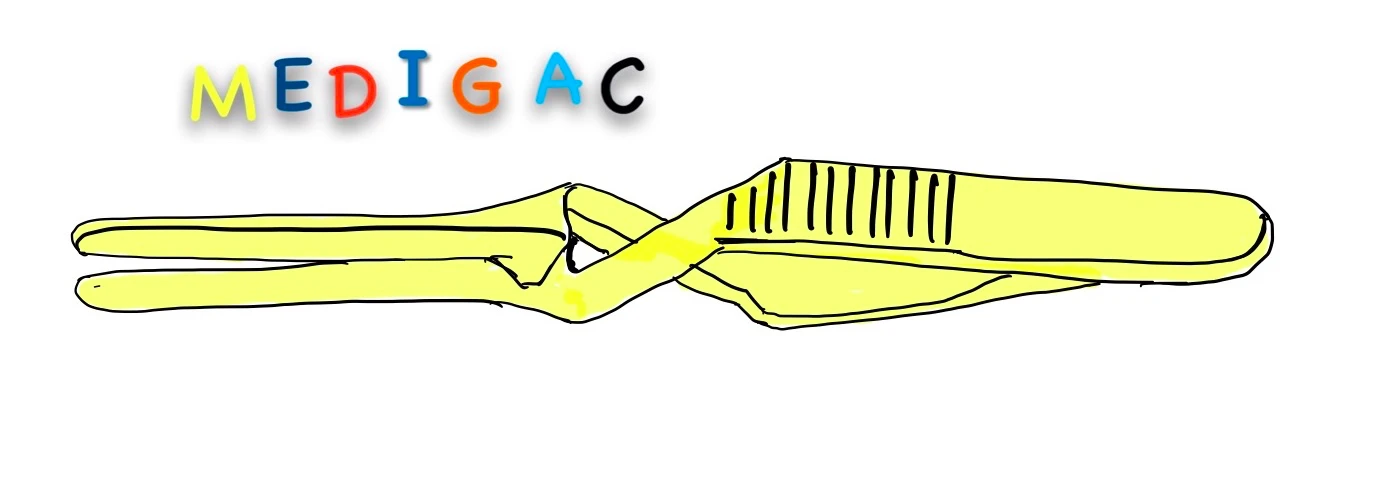
Description :
Metallic body with two limbs which re twisted at the middle to form a clip.
—-Upper surface of the arms are serrated.
Uses :
1. Holding the blood vessels : To Stop blood flow to a organ of interest , mainly used in coronary artery bypass surgery.
2. Used to hold sutures and others tissues.
LANE INTESTINAL CLAMP

Description :
Forceps like structure with longitudinal at the jaws.
Uses :
1. Grasping large organs : To Grasp and occlude large organs such as stomach and the intestine during general surgeries.
DOYEN’S INTESTINAL CLAMP
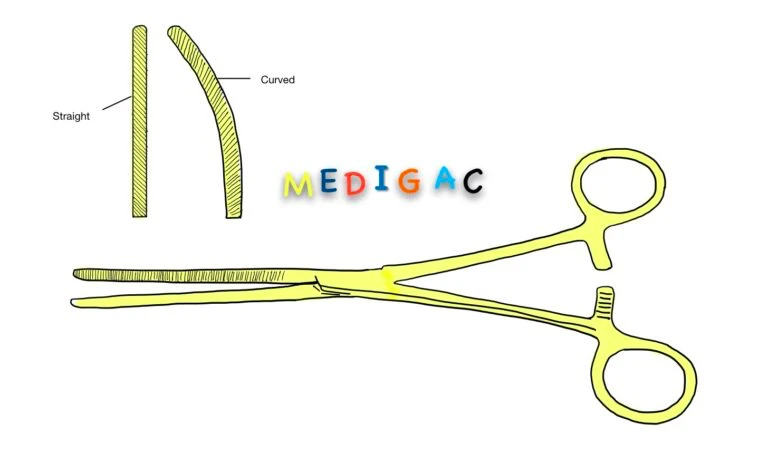
Description :
Finger bows, a couple of shafts, and a pair of long blades make up this instrument. The blades are lighter, and the blades have vertical serrations. The blades are brought together by a ratchet during closure.
Uses :
1. For Resection : Anastomosis of the Intestine incase of ;
- Accidental injuries to the gut
- Intestinal growths
- Gastric/Intestinal Bypass operations
- Strangulated Hernia
ELECTRIC DERMATOME

Description :
Skin grafting device used to harvest a skin graft taken from a donor area.
Uses :
1. Skin Slices : to produce thin slices of skin from a donor area, in order to use them for making skin grafts.
Mainly used in Grade-3 burns.
HUMBY KNIFE

Description :
Made up of stainless steel and has a Handle and a cutting blade used to shave off a layer of skin mainly used for skin grafting.
Uses :
1. Skin Grafting : To produce thin slices of skin from a donor area, in order to use them for making skin grafts.
Mainly used in Grade-3 burns or trauma.
SURGICAL SCISSORS

Description :
Scissors has mainly 6 parts :
- Finger rings
- Shank
- Screw joint
- Straight and Curved sharp cutting jaws
Uses :
1. Tissue Cutting : During any surgical procedures, it is used to cut tissues at the surface or inside the human body.
2. Bandage : Bandage scissors can be used to cut bandages without gauging the skin.
VAGINAL SPECULUM

Description :
Made up of stainless steel and has two blades which can be adjusted by the screw mechanism.
Uses :
Diagnostic Uses :
- Taking Pap smear
- Colposcopic Examination
Therapeutic Uses :
- Introducing an IUD
- Cauterization of vaginal erosion
SATINSKI BICURVED CLAMP

Description :
Made up of stainless steel and has two arms and curved blades. Two sided limbs are connected with each other via box joint. And it also has a ratchet system to lock and unlock at a specific position.
Uses :
1. Stopping the blood flow : Specially designed to control blood flow in the Vena Cava vein.
2. Mainly used in some Cardiovascular and Cardiothoracic surgeries
SILS PORT
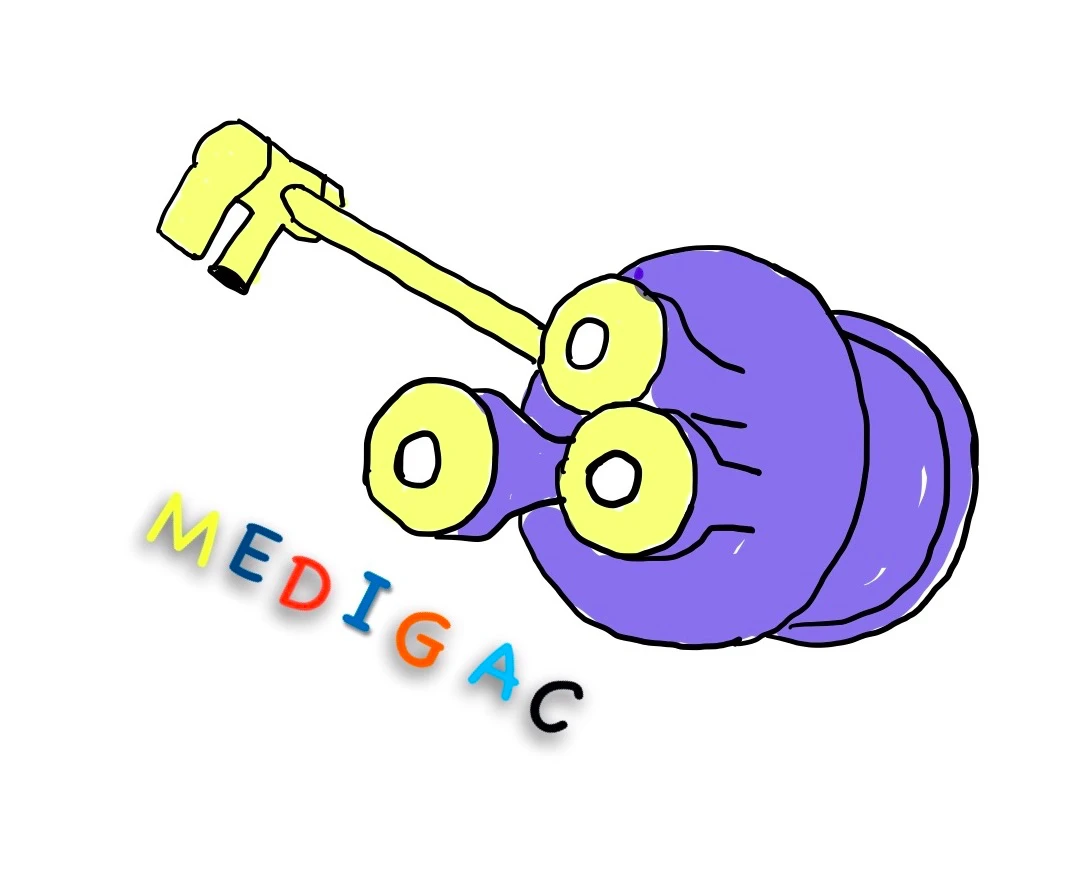
Description :
Multiple access port designed to perform laparoscopic surgeries by a single incision.
Uses :
1. In Laparoscopic surgeries : To enable laparoscopic surgeries through a single incision.
LIGATION CLIP
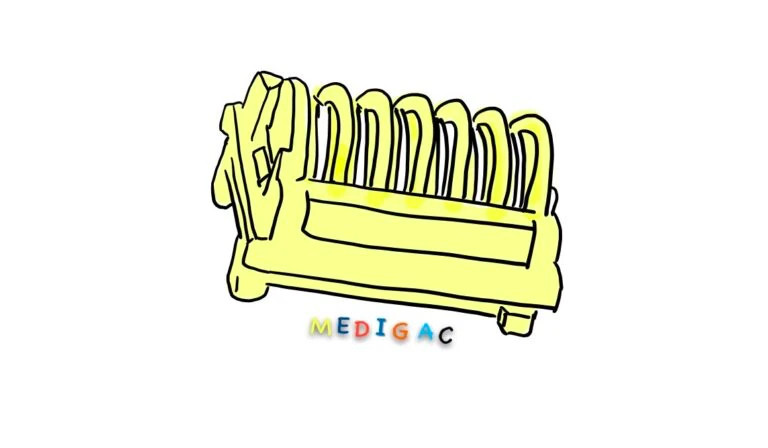
Description :
Also called ligating clip and made up of metal.
Uses :
Used as extra ligating metallic clip in both open and endoscopic surgeries.
LAPAROSCOPIC TROCHAR

Description :
Made up of stainless steel and has a cannula for the trochar.
Uses :
1. To access and drain collections of fluids such as in a patient with Hydrothorax or Ascites.
SUCTION TUBE

Description :
It has mainly 5 parts :
- Connector for vaccum
- handle
- Thumb-control alve
- catheter
- Tip
Uses :
1. Sucking up Blood/Fluid : To suck up blood or any kind of fluid secretion during medical or surgical procedures.
CURETTES

Description :
A small metallic tool which has two ends :
— The tips of the curette is a small scoop, hook, or gauge.
Uses :
- Scraping of biological tissue or debris in a biopsy, excision, or cleaning procedures.
